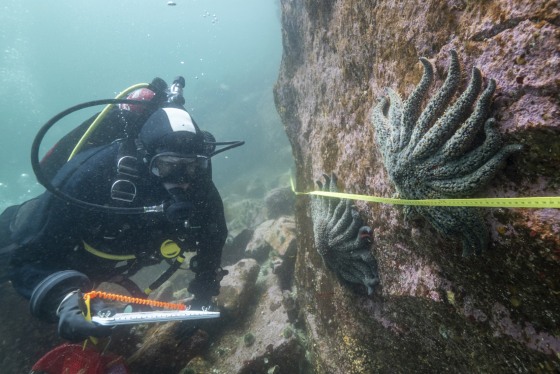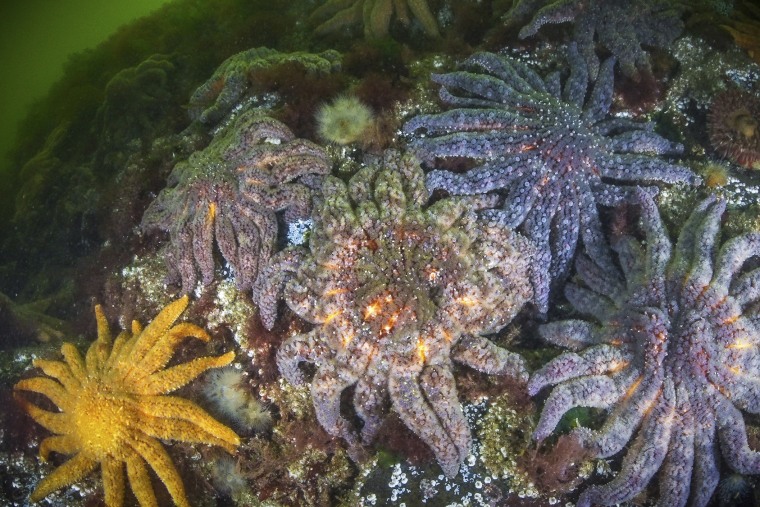Scientists say they've found out what killed over 5 billion sea stars
Starting in 2013, a mysterious sea star wasting disease sparked a mass die-off from Mexico to Alaska. The epidemic has devastated more than 20 species and continues today.

/ Source: The Associated Press
WASHINGTON — Scientists say they have at last solved the mystery of what killed more than 5 billion sea stars off the Pacific coast of North America in a decade-long epidemic.
Sea stars — often known as starfish — typically have five arms and some species sport up to 24 arms. They range in color from solid orange to tapestries of orange, purple, brown and green.
Starting in 2013, a mysterious sea star wasting disease sparked a mass die-off from Mexico to Alaska. The epidemic has devastated more than 20 species and continues today. Worst hit was a species called the sunflower sea star, which lost around 90% of its population in the outbreak's first five years.
"It's really quite gruesome," said marine disease ecologist Alyssa Gehman at the Hakai Institute in British Columbia, Canada, who helped pinpoint the cause.
Healthy sea stars have "puffy arms sticking straight out," she said. But the wasting disease causes them to grow lesions and "then their arms actually fall off."
The culprit? Bacteria that has also infected shellfish, according to a study published Monday in the journal Nature Ecology and Evolution.
The findings "solve a long-standing question about a very serious disease in the ocean," said Rebecca Vega Thurber, a marine microbiologist at University of California, Santa Barbara, who was not involved in the study.
It took more than a decade for researchers to identify the cause of the disease, with many false leads and twists and turns along the way.
Early research hinted the cause might be a virus, but it turned out the densovirus that scientists initially focused on was actually a normal resident inside healthy sea stars and not associated with disease, said Melanie Prentice of the Hakai Institute, co-author of the new study.
